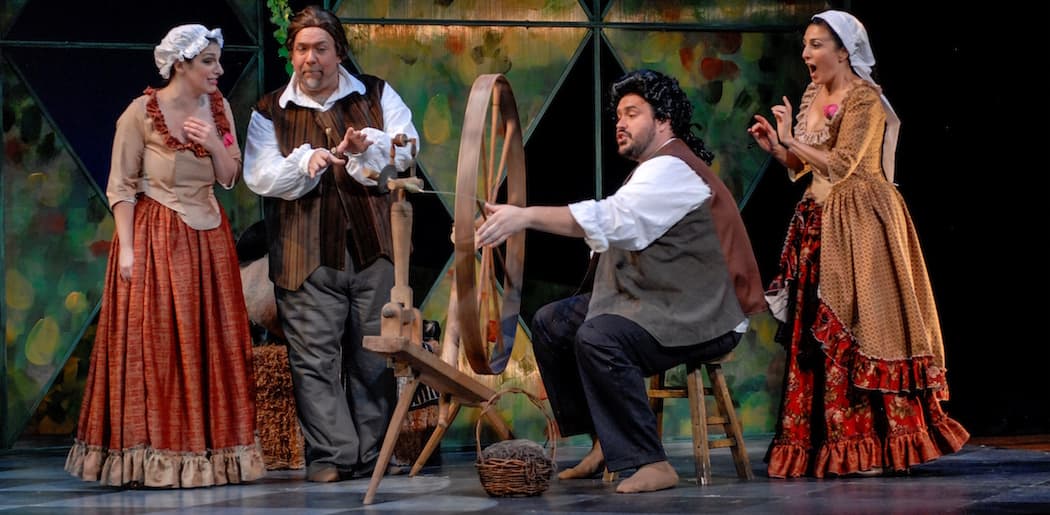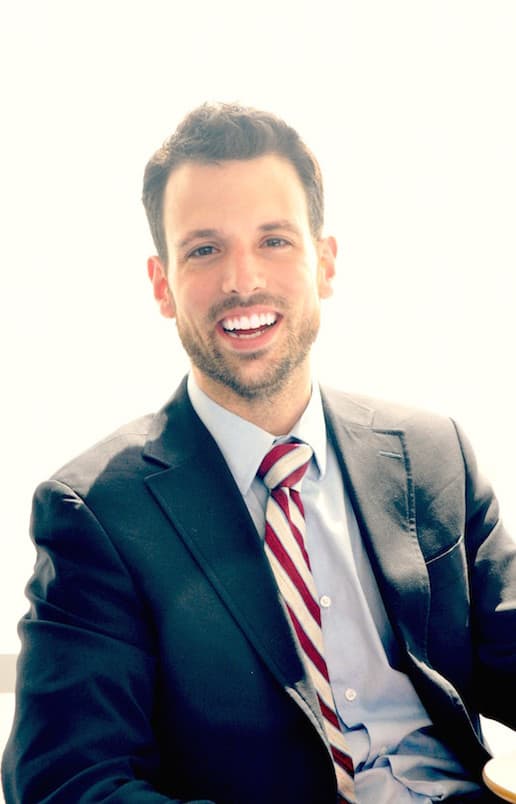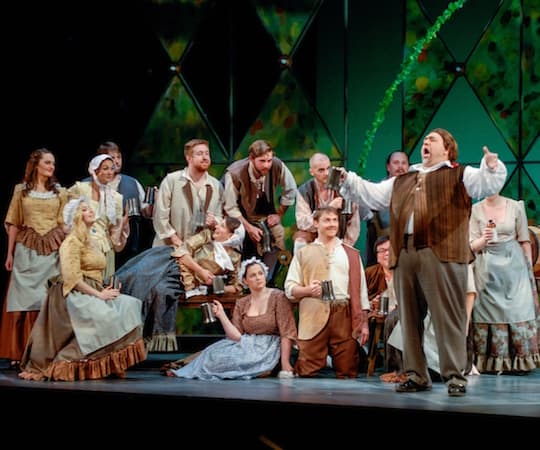Advertisement
BMO Stage Director James O'Leary Discusses 'Martha'

Having previously directed “L’heure Espagnole” for Boston’s OperaHub in 2009, and worked with the Yale School of Drama, the American Repertory Theater's Oberon Stage and the Williamstown Theatre Festival, "Martha" stage director James O’Leary is making his Boston Midsummer Opera debut this season.
When I phoned him to discuss the upcoming production of Friedrich von Flotow’s popular piece, he had a lot to share, from its amalgamated style of music and dance to its simple yet heartening message.

Eloise Giegerich: How is everything going?
James O'Leary: It’s great, we’re having a great time. I didn’t know “Martha” until I started working on it back in December — I had heard that it was a popular opera, and I had heard a couple arias from it, but I didn’t know what the whole thing was like. Exploring it with this cast and with Susan Davenny-Wyner, our music director, has been really wonderful. I have a new respect for the piece; it’s very interestingly written, and it’s a style of opera that I’m not really used to.
Regarding that different operatic style, I had read that the piece, though written in Flotow’s native German, is actually more French in character. Could you talk a little more about how this combining of styles plays into the opera, and what it is about the variety that makes “Martha” unique?
I think you’ve put your finger on one of the most interesting aspects of the opera — to my ears, anyway. It is written in German, and there are certain parts of it that sound like [a] German romantic opera — the style of Carl Maria von Weber, though that opera tends to be kind of serious, it doesn’t have the vocal extravagances that you hear in a Rossini or something like that — but then there are other parts that sound like Italian buffa or a Mozart ensemble finale, characterized by comic writing, by fast paced dialogue and movement.
Then, on top of that, there are these grand tableau scenes, right out of French grand opera. All in all, this opera is not just French, it’s not just German, it’s not just Italian — Flotow really drew on all three. Our task has been trying to get each one of those to not stifle the other, to shine as brightly as possible.
Have you encountered such a wide borrowing of styles in other operas?
I’ve encountered operas with mixed styles, sure, but the really unusual thing about this is that it was characterized as a German Romantic comic opera. To my mind, that would have been a contradiction of terms — when you think of Weber, you don’t necessarily think of humor. But Flotow’s written a Romantic opera that holds Weberian values — bucolic, simple, rustic life in favor of rationality, courtly tradition — and he’s managed to do that in comic terms. It’s really unlike anything that I’ve ever seen.
I read in your bio that you’re interested in the way in which composers insert critiques or else interpretations of the current culture in their pieces, projecting history onto stage, in a sense. You mentioned the Weberian values, this “return to nature,” as being a part of “Martha,” and I was wondering if there is anything else in Flotow’s opera that you see as reflective of specific societal tensions or politics of the time?
We may take it for granted today, but at the time, I think people would have read “Martha” quite intensely and seen it as very special. The emotional center and finale both present folk songs celebrating the last moments of summer. If you think about “The Marriage of Figaro,” whereas Mozart, like Flotow, addresses relations and conflict between aristocracy and peasants, he does so by suggesting a reformation of the aristocracy; Flotow ends with a folk song.
“Martha” is about people giving up aristocracy all together, and going to live on the land, going to live in the countryside, away from this rationalistic, duty-filled ceremony of courtly life. It’s like “Cinderella” in reverse — the Cinderella figure has the opportunity to embrace royalty, but in the end, both she and her prince give up aristocratic tradition to remain peasants. And that at the time, especially because of Romanticism’s influence and this “back to nature” mentality, would have really struck a chord with the audience.

What have been some of the more challenging aspects of putting together "Martha"?
In a Mozart opera, you usually get an ensemble moment at the end of an act and it becomes very intricate very fast, very funny. But this is intricate for long stretches, the Italian buffa moments almost taking up the first two scenes entirely, and part of the third. Really, it's the buffa blocking that has taken some more time to work through, to make sure that it's carefully coordinated — with specific detail to small gestures and glances — but not so much so that it appears stilted, choreographed.
It took us a while to find the meaning behind each moment — why were you looking that way in that moment, why are you crossing there. We're still answering those questions, but it's coming together in a way that I hadn't even anticipated. The actors are bringing themselves to the production in a way that makes it feel, although buffa, organic and part of the characters — a delicate balance.
“Martha” was originally adapted from an earlier ballet of Flotow’s, “Hariette, ou la servant de Greenwiche.” Has this dance history had any influence on the way in which you thought about staging or characters’ movement?
A lot of the scenes, especially the buffa comic scenes, are subtly disguised dance movements. There’s one scene where they’re doing a rollicking jig, and then the movement switches to a sarabande — it’s this slightly more stately moment. On stage, we’ve done it so that the rollicking jig moment goes out of control, and then one person, feeling only slightly indignant, inspires the sarabande.
We’ve really allowed the dance styles of the music to inform the way in which we proceed; we’re always trying to think of the dance origins, and how they can help us interpret what the characters are doing.
Interview has been edited for clarity and brevity.
The BMO will perform "Martha" July 29 and 31, at 7:30 p.m. and Aug. 2, at 3 p.m. at Boston University's Tsai Performance Center.